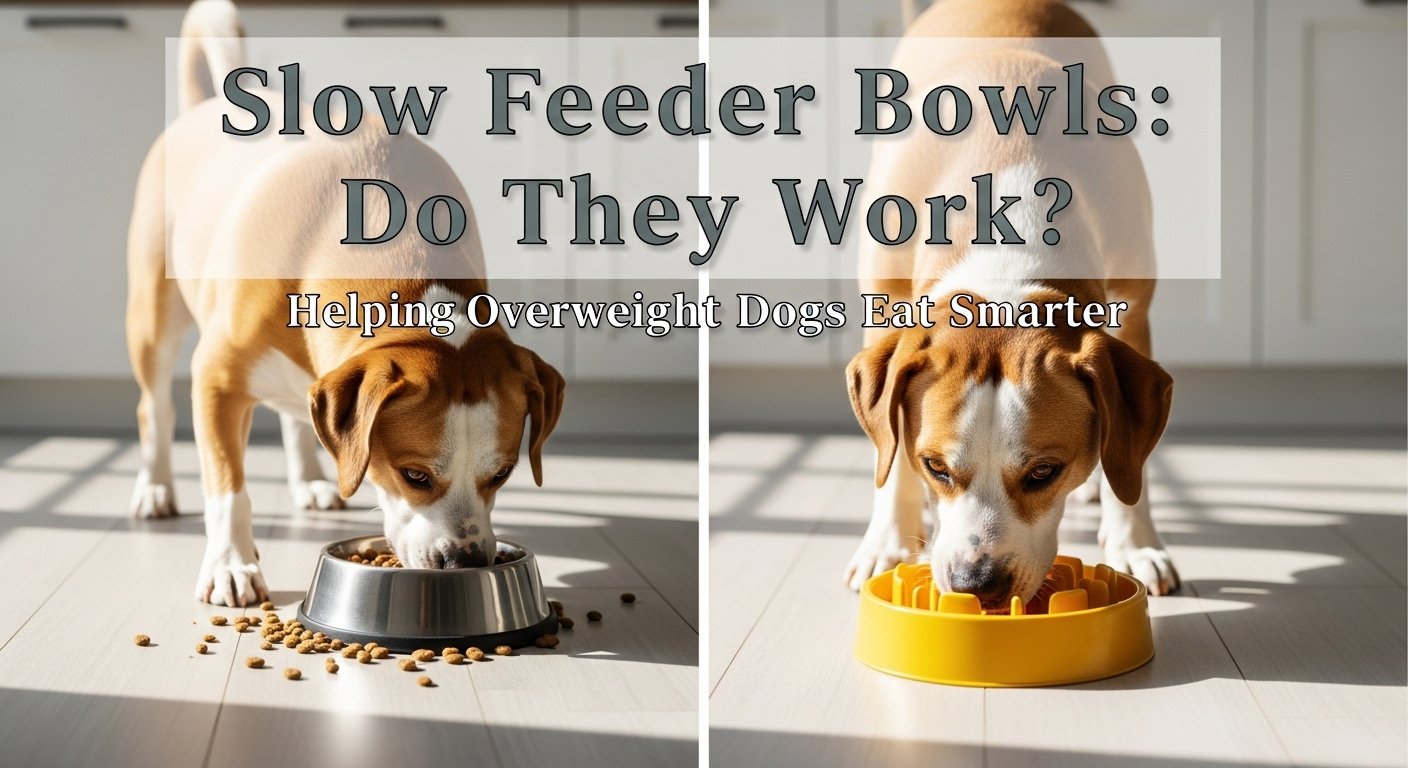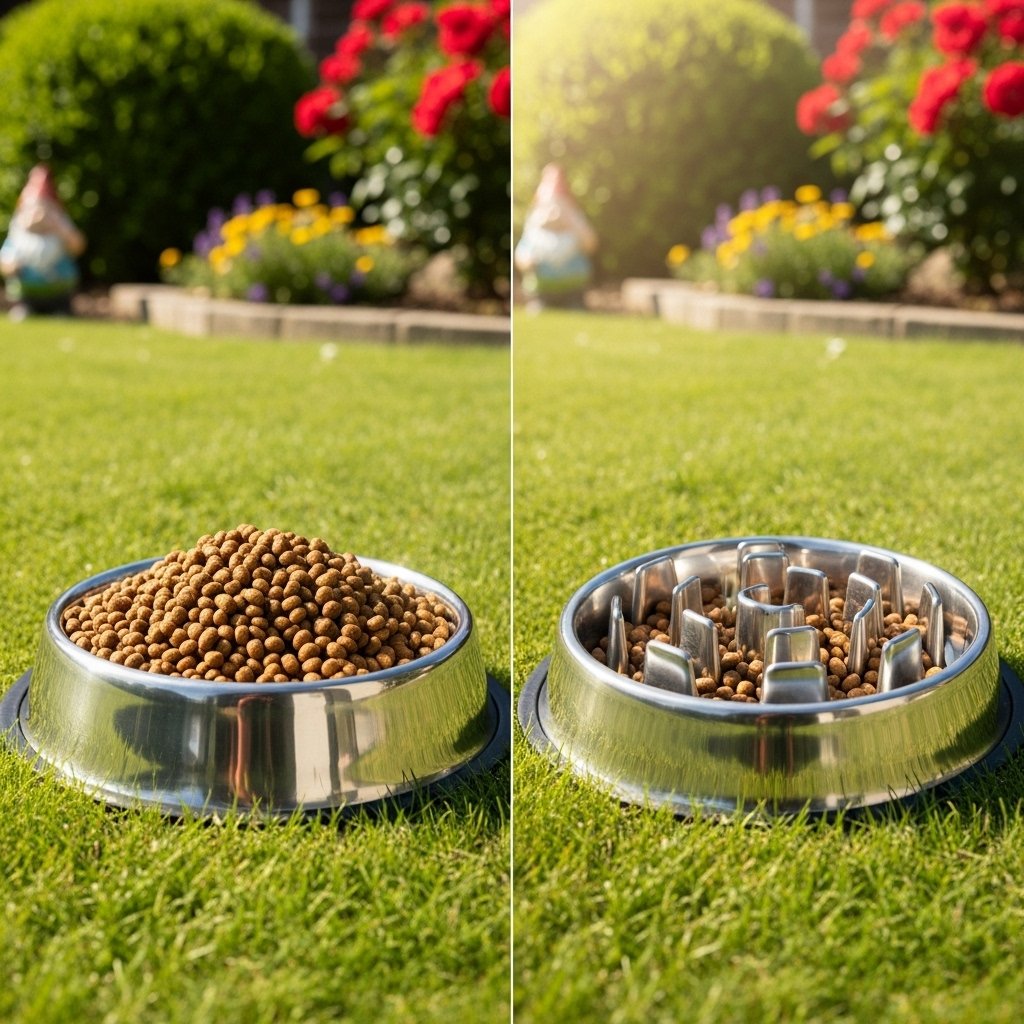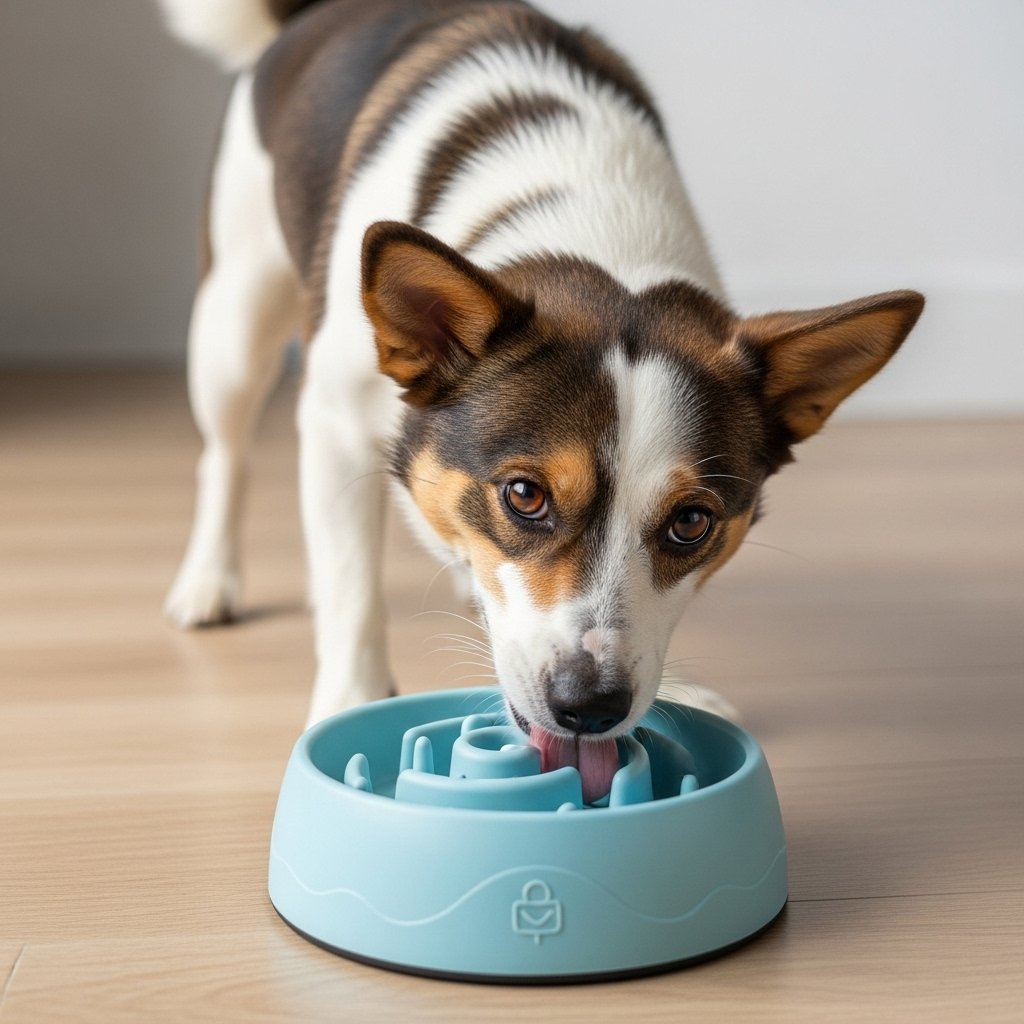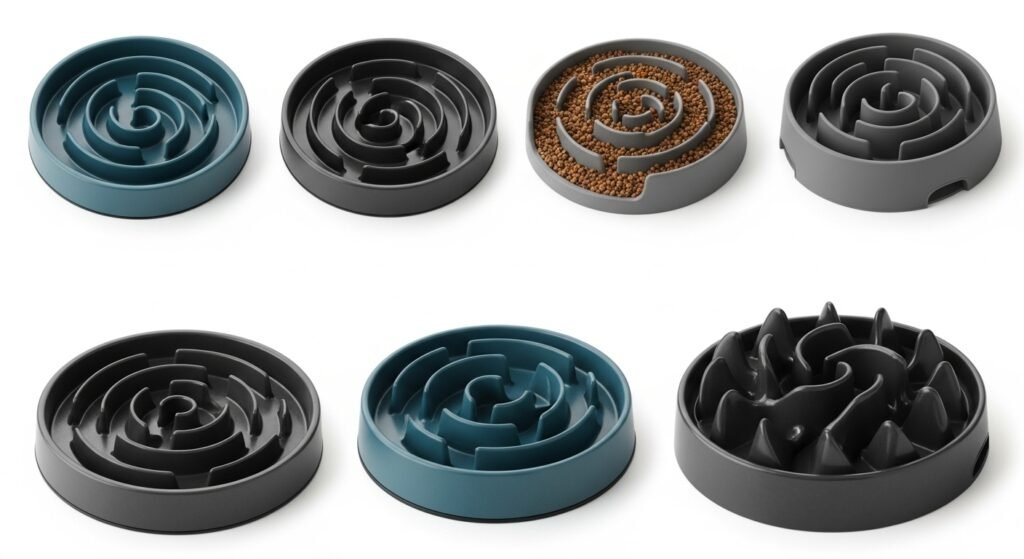
Slow Feeder Bowls: Do They Really Help Overweight Dogs?
If you’ve noticed your dog gulping down food in seconds, you’re not alone. Many dogs eat far too quickly, which can lead to obesity, bloating, and digestive issues. For overweight dogs especially, controlling mealtime speed is crucial.
That’s where slow feeder bowls come in. These specially designed bowls feature ridges, mazes, or raised patterns that force dogs to eat more slowly. But do they really help dogs lose weightor are they just another trendy pet product?
Let’s break it down with vet insights, owner experiences, and real-world results.
Why Dogs Eat Too Fast
Some dogs eat as if every meal is their last. This behavior may be due to:
- Instincts: In the wild, dogs competed for food. Eating quickly ensured survival.
- Boredom or anxiety: Some dogs gulp food to cope with stress.
- Feeding style: Free-feeding or irregular meal times can make dogs rush meals.
Fast eating isn’t just messy it can cause choking, vomiting, bloating, and weight gain.

How Slow Feeder Bowls Work
A slow feeder bowl has ridges, spirals, or barriers that create obstacles. Instead of gulping food, your dog must work around the design to access kibble.
Benefits:
- Slows eating by 5–10x
- Promotes better digestion
- Reduces bloating and gas
- Encourages mindful eating
- Turns mealtime into mental enrichment
Eating slower gives dogs’ brains time to register fullness, reducing overeating.
Do Slow Feeder Bowls Help With Weight Loss?
Yes, but indirectly.
Slow feeder bowls don’t “burn calories” themselves, but they help control portions and prevent overeating.
Here’s how they support weight management:
- Slower eating → fuller feeling → fewer begging behaviors.
- Less vomiting/bloating → better nutrient absorption.
- Portion control → owners stick to recommended amounts.
- Extra activity → bowls act like puzzle toys, adding mental stimulation.
Think of them as a tool not a miracle cure. Combined with diet and exercise, they can make a real difference.
Vet Insights
Veterinarians recommend slow feeders especially for:
- Overweight or obese dogs
- Large breeds prone to bloat (Great Danes, German Shepherds, etc.)
- Fast eaters who choke or vomit after meals
Dr. Sarah Wooten, DVM, explains:
“Slow feeders encourage dogs to engage with their food, which reduces overeating and supports digestive health. They’re especially useful in weight management programs.”
Pros & Cons of Slow Feeder Bowls
👍 Pros
- Slows down eating
- Supports healthy digestion
- Reduces risk of bloat in large dogs
- Adds fun to mealtime (like a puzzle)
- Available in many sizes and designs
👎 Cons
- Some dogs may get frustrated at first
- Not all designs work equally well
- Harder to clean than regular bowls
- Doesn’t replace the need for portion control and exercise

How to Choose the Right Slow Feeder Bowl
When picking a bowl, consider:
- Size of your dog → Large breeds need bigger bowls.
- Design difficulty → Spirals and mazes for experienced users; simple ridges for beginners.
- Material → BPA-free plastic, stainless steel, or ceramic.
- Non-slip base → Prevents flipping.
- Dishwasher safe → For easy cleaning.
Start simple and gradually increase difficulty to keep dogs engaged.
Training Your Dog to Use a Slow Feeder

Some dogs may resist at first. Here’s how to make the transition easier:
- Introduce the bowl slowly, starting with high-value treats.
- Keep portions smaller until they adjust.
- Supervise mealtime to prevent frustration.
- Reward calm eating behavior.
Alternatives to Slow Feeder Bowls
If your dog doesn’t take to a slow feeder, try:
- Food-dispensing toys (KONGs, puzzle balls)
- Scatter feeding (spreading kibble on a mat or floor)
- Snuffle mats (encourage natural foraging)
- Multiple smaller meals instead of one large meal
Real Owner Experiences
- Lisa (Beagle owner): “My Beagle used to inhale food in seconds. The slow feeder made meals last 5 minutes instead of 30 seconds—she’s calmer and less gassy.”
- Tom (Lab owner): “Our vet suggested a spiral slow feeder. It hasn’t made him skinny overnight, but he eats slower, and it helps with portion control.”
- Senior Rescue Dog Owner: “We use a ceramic slow feeder. She lost 5 lbs over 3 months with portion control + the bowl.”

Tips for Using Slow Feeders in Weight Loss
- Stick to measured portions (don’t overfill).
- Pair with daily walks and playtime.
- Use low-calorie kibble or weight management formulas.
- Track your dog’s progress with monthly weigh-ins.
- Combine with healthy treats like carrots or green beans.
Final Thoughts
So, do slow feeder bowls really help overweight dogs?
Yes,but as part of a bigger plan. They encourage slower, healthier eating, reduce bloating, and help prevent overeating.
They’re not a magic fix for weight loss, but when combined with portion control, exercise, and a balanced diet, they’re one of the simplest, most effective tools for improving your dog’s health.
If your pup eats too quickly or struggles with weight, a slow feeder bowl may be exactly what you need to turn mealtime into a healthier, happier experience.
Ready to Connect?
Enjoyed learning about big dog breeds? Join the Pets Fun Zone community — a growing space for U.S. pet lovers to:
Share photos, stories, and experiences
Ask questions and get advice
Discover recs for food, training, vet care, and more
Join us today at Pets Fun Zone and be part of a caring community of passionate dog lovers!
Let’s welcome all the gentle giants together.



